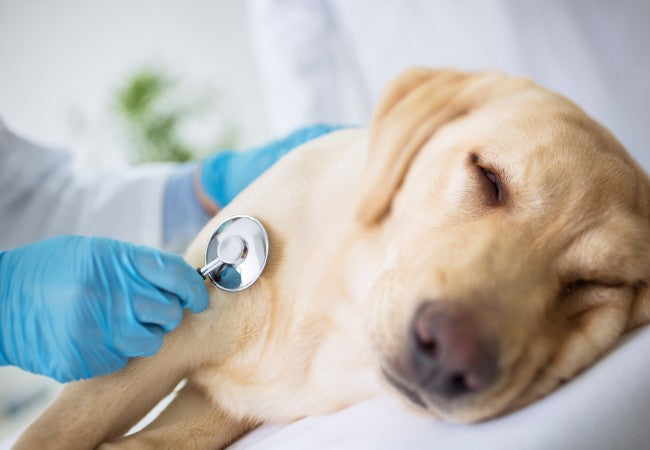Vet’s 2025 Guide to Lung Lobe Torsion in Dogs 🩺🐶

In this article
Vet’s 2025 Guide to Lung Lobe Torsion in Dogs 🩺🐶
By Dr. Duncan Houston BVSc
Lung lobe torsion happens when a lung lobe twists on its bronchus and blood vessels, causing blockage, engorgement, and death of that lobe. It can be life-threatening—quick diagnosis and surgery are key. Here’s your comprehensive 2025 guide to detection, treatment, recovery, and supportive care.
1️⃣ What Is Lung Lobe Torsion?
A lung lobe twists around its bronchi and vessels, leading to airway and blood flow obstruction. The lobe swells with blood, becomes necrotic, and may leak fluid or collapse, compromising breathing.
2️⃣ Which Breeds & Dogs Are at Risk?
- Large deep-chested breeds: Afghan Hounds are exceptionally at risk—133× more likely.
- Small breeds too: Pugs, Yorkies, Dachshunds, Mini‑Poodles have documented cases.
- Age span: Typically middle-aged (around 3 years), but puppies as young as 7 weeks in pugs have been affected.
3️⃣ What Triggers the Torsion?
Causes include:
- Spontaneous: Sudden twist due to weak ligaments and lung lobe mobility.
- Secondary causes: Pleural effusion, trauma, thoracic surgery, pneumonia, chylothorax, or diaphragmatic defects.
- Lobes involved: Most often right middle and left cranial lobes due to anatomy.
4️⃣ Clinical Signs & Red Flags
- Sudden or progressive difficulty breathing, rapid breathing (tachypnea).
- Persistent coughing, sometimes blood-tinged (hemoptysis).
- Lethargy, anorexia, fever—seen especially in chronic cases.
- Pale or bluish gums (cyanosis), signs of pain or shock.
- Vomiting, diarrhea may accompany chronic cases.
5️⃣ Diagnosing Lung Lobe Torsion
🏥 Physical Exam & Basic Tests
Your vet will check breathing sounds, look for muffled lungs, and run CBC/chemistry to rule out infection or anemia.
📸 Imaging
- X‑rays: Show pleural effusion, consolidation, abnormal bronchus positioning, mediastinal shifts.
- Ultrasound: Hypoechoic, rounded lobes—fluid around it confirms effusion.
- CT scan: Best for small or ambiguous cases—detects abrupt bronchus cut-off, trapped air.
🔬 Fluid Sampling
Thoracocentesis helps both diagnosis and relief—samples may be bloody, chylous, or sterile inflammatory.
🔍 Definitive Diagnosis
Confirmed through direct visualization during surgery or necropsy—no other method is 100% certain.
6️⃣ Treatment: Surgery First 🛠️
Lung lobectomy—removing the torsed lobe—is the only effective treatment. Derotation risks severe reperfusion injury.
- Approach: Open thoracotomy or minimally invasive thoracoscopy.
- Packing vascular pedicle: Vessels and bronchus are clamped, then sealed.
- Chest tube: Placed to drain air and fluid post-op; removed when output <2 ml/kg/day and no air leak.
- Supportive care: Pain control, oxygen, antibiotics, IV fluids after surgery.
7️⃣ Prognosis & Outlook
Prognosis depends on the cause:
- Spontaneous torsion: Fair—many dogs recover fully.
- Secondary cases: Guarded—poorer outcomes if underlying disease such as chylothorax or cancer.
- Complications: Chylothorax, recurrence, ARDS, pneumonia or shock can arise post-op.
8️⃣ Recovery & At‑Home Support
- Rest & restricted activity for several weeks.
- Cage rest, pain meds & antibiotics as prescribed.
- Monitor chest tube if still in place—call vet if issues arise.
- Telehealth check-ins via Ask A Vet to monitor breathing, appetite, and recovery.
9️⃣ Prevention & Early Detection
- Watch for persistent coughs or breathing changes, especially in deep‑chested breeds.
- Check-ups for dogs with predisposing conditions (pleural fluid, pneumonia).
- Rapid veterinary assessment for early signs of respiratory distress.
- Tap chest fluid early before torsion risk increases.
🔟 When to Seek Immediate Veterinary Care
- Sudden or labored breathing, fast breathing rate.
- Coughing, especially blood-tinged.
- Weakness, collapse, pale or bluish gums.
- Loss of appetite or vomiting with respiratory signs.
- If lung lobe torsion is suspected, diagnostics and surgery must not be delayed.
🏁 Final Thoughts
Lung lobe torsion is a rare but life-threatening canine emergency. Quick action, advanced diagnostics, and surgical removal of the torsed lobe are essential. With proper care and supportive recovery tools from, and Ask A Vet, many dogs can return to a healthy life in 2025 and beyond.
For ongoing vet support, recovery monitoring, or urgent telehealth check-ins, visit AskAVet.com and download the Ask A Vet app — available 24/7 for your pup’s needs 🐾📱.






